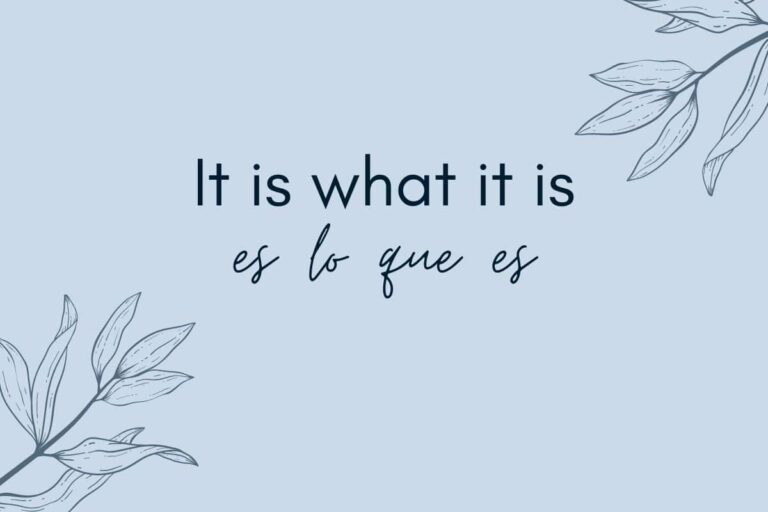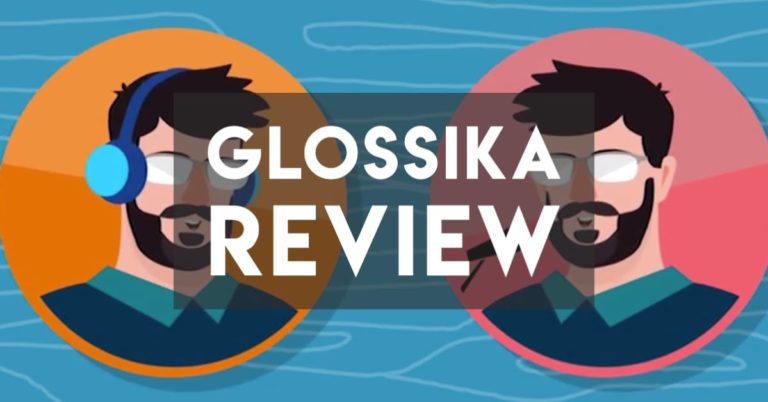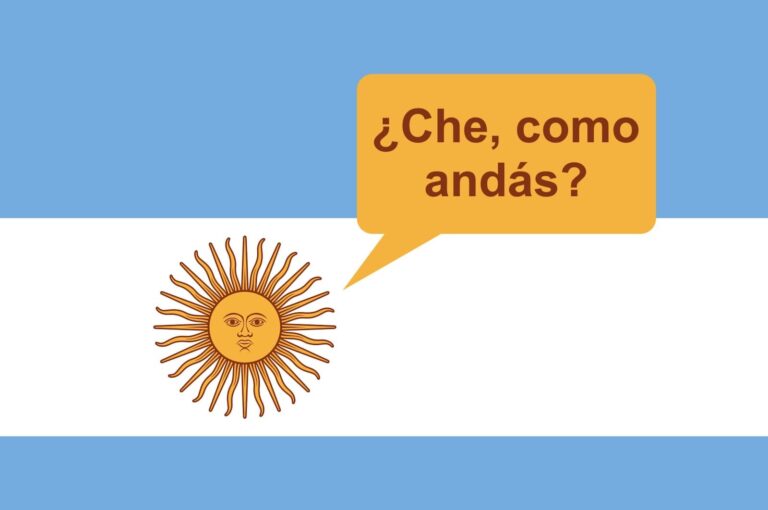Lingvist Review: Fun, but Incomplete [2021 updated]
This is our Lingvist review — all about the made-in-Estonia language-learning app.
People are always looking for shortcuts and hacks when learning a language.
- Can you learn a language in 30 hours doing nothing but studying with an app?
- How fluent can you get with an app alone?
- What app is going to get you fluent as fast as possible?
These are just a few of the questions I expect you’ve been asking yourself as you fiddle with your app of choice on the way to work — either solving Duolingo puzzles, listening to native speakers on Memrise or maybe even patiently keying words into Lingvist.
![Lingvist Review: Fun, but Incomplete [2021 updated] 1 Lingvist review, main logo](https://discoverdiscomfort.com/wp-content/uploads/2019/04/lingvist-cover-image-1024x536.png)
There’s always an app du jour promising that with a simple commitment of 30 minutes of study a day, their AI-based language teaching technique, based on millions of hours of research across multiple languages by data scientists, PhDs and alien superheroes, can teach you a language.
Lingvist is another one of those.
Is this possible? How?
Me speaking German after a month with Lingvist
The best Lingvist review would show that it’s a good way of teaching a language. So — is it?
After using Lingvist for a month, I could have basic conversations like
- “Where is your wife? She was here.” “I don’t know”. “Why don’t you know?”
- “I don’t want to eat this!” “Why? You are strange”
- “Why are you standing here?” “Because I want to eat a sandwich.”
These are the “conversations” I had with my brother, who’s fairly fluent in German (at least compared to me). Let’s cut to the chase. This isn’t super advanced.
But it’s only using one app: Lingvist. It was after using it for a total of twenty hours over the course of a month.
Speaking to him also exposed many things I could NOT say
- “How are you?”
- “Nice to see you again!”
- “I’ll be back in 30 minutes.”
And many other basics. Basically, after a month of using Lingvist — and twenty hours of cumulative study, while I felt I could assemble sentences, there were so many basics that I didn’t know that I realised this isn’t for me.
What is Lingvist? In a nutshell
In a nutshell, Linvgist is a cloze-style learning app (yes, like Clozemaster) that teaches you by asking you to fill in a blank word in a sentence. It uses a pre-built bank of languages. You get the meaning of the sentence in your native language.
For example, you might be given a prompt like this:
My hovercraft is full of eels.
Mein ___ ist voller Aale
And into that box you have to type “Luftkissenfahrzeug” (good luck).
Right now, you can learn five non-English languages, including French, Russian, Spanish (two variants, Portuguese, and German. You can also learn two variants of English from other languages.
You can learn any of those languages from any other language. For example, you can learn Russian from German.
What I like and don’t like about Lingvist
The things I like about Lingvist are
- It has a very good app design — it’s smooth, elegant, not clunky at all. I would say it’s the best-designed language app on the market and has been for years.
- It has a very focused approach. If you’re building useful vocabulary in a language that it includes, it’s a great way of doing it.
What I don’t like about Linvgist is
- The cloze method can teach you vocab, but not the whole language. Lingvist is a very sophisticated app with a rather narrow use case. I still think that Anki is a far more powerful way of learning vocab — and it supports the cloze method, too.
- Lingvist has limited languages. Good news if you know one of the included ones. I have a feeling it would struggle with left-to-right languages or ones using other scripts. They would also face the same problem that Speechling does, which is that every time they add a language, they ahve to translate the whole interface. (Still, Speechling is at 10+ languages and they only started four years ago, too.)
- Lingvist is expensive. I know, developers have to eat (something other than ramen). But there are far more complete apps out there that cost less than Linvgist does.
Why even try to learn a language using only an app?
Any sensible language student would tell you that learning only using an app is a bad idea. In fact, this is part of what we recommend in general. At a minimum, any app should be combined with a good teacher like one found through italki (see our full review and guide). German isn’t even one of my highest priorities.
The reason I decided to try Lingvist and write this Lingvist review is that it’s an Estonian company that made it and we happened to be in Estonia for a little while. We tried to meet them (unfortunately, never crossing paths), gave it a try before meeting them and then decided to keep going to see how far we could take it.
The idea of studying for a short amount every day using only an app is alluring on multiple levels.
Firstly, AI seems like a much more intelligent way to teach. A tutor understands what words you know and what level you’re at, and drills you on your weaknesses as well as not letting you coast along on your strengths. A teacher normally does this well, but it seems like something you can entrust to a machine much more precisely.
Secondly, an app can democratise education. It can make something very inaccessible — language study, typically provided through private tutors or university courses — accessible to a broader range of the population. Anyone reading this is likely fluent in English.
Think of everyone out there in the world not fluent in English and not raised in an area blessed with a high level of English language teaching. Making learning English available to those populations is one of the things that could most transform their lives.
Finally, it appeals to the lazy person in all of us. Just thirty minutes a day! From anywhere! You probably barely have to pay attention!
Overall, I think the results are decent but incomplete. I didn’t understand a lot of what my brother said, but I managed to hold a basic conversation, and after 20 hours of only clicking and typing my way through an app, over the course of a month.
How does Lingvist teach?
![Lingvist Review: Fun, but Incomplete [2021 updated] 2 Lingvist's language-teaching interface, asking you to write words you don't know](https://discoverdiscomfort.com/wp-content/uploads/2019/04/Lingvist-di-bundesregierung-1024x602.png)
Lingvist has a really interesting contextual algorithm that I haven’t seen anywhere except in the way we naturally study ourselves.
Lingvist never teaches you grammar. You’ll never have to review conjugation tables, understand how sentences are formed or learn the peculiarity of pronouns.
Instead, Lingvist tries to teach you a language contextually. For example, it’ll pose a question. In the above example, it put a question: “Die _________ hat einen neuen Sprecher” and told me that the blank meant “federal government” in the sentence “The federal government has a new speaker”.
The first time I come across a new word or construct, if I don’t know the word (which I never do, as I’ve never studied German), I have to just hit enter for it to tell me. The next time, I have to type in “Bundesregierung“. If I do, it’ll show me this question less frequently. If I don’t know (or mistype or spell it wrong) it’ll bring this card right back to the top of the pile.
One thing that Lingvist has added since we started using it is the opportunity to learn from your own database of words or a block of text!
![Lingvist Review: Fun, but Incomplete [2021 updated] 3 Lingvist feature of adding Spanish words from a block of text to a lesson](https://discoverdiscomfort.com/wp-content/uploads/2020/02/Lingvist-review-adding-words-from-a-block-of-text-1024x777.png)
For example, in the above image, I added a block of text from a news article. Lingvist founds words that it can teach and gives me the option to learn as many as I want.
Unfortunately, Lingvist can’t teach you words it doesn’t know. So it won’t include Colombian slang like rumba, which is the local word for “a party”.
How do you measure how efficiently you’re learning?
For many of us, the best way to assess how well you’re learning is speaking to people and seeing how far we can get.
For everyone else, there’s data. Or more precisely, charts. Man, these are great!
The charts are one area where Lingvist absolutely excels. For the nerds among us, it’s very satisfying to see.
Lingvist tells you your:
- Active study time. How much time you’re spending per day reviewing your 100-200 flashcards (I typically did between that to continuously add 20-30 cards a day). The surprising thing for me is how difficult it is to keep focus. Half an hour of active study time takes me longer than half an hour.
- How many words I have learned. I can also pull up a list (not shown) of words I’ve had to study the most, learned most recently, etc. I also find it interesting that it tells me how much German I know as a percentage of the language, based on the words I know. (This depends heavily on the definition of “word” – see below.)
- Study time per day. This keeps me in check. If you’re the kind of person who likes to see big continuous lines, it’ll motivate you to keep it up there.
I like this level of data much more than I like gamification (like Duolingo, with things like hearts, lingots or whatever) or arbitrary metrics like how sprouted the trees are in Memrise. Those are fine. They’re symbolic, but this is quantitative.
One note is that the number of “words” you’ve learned heavily depends on the Lingvist definition of a ‘word’. A ‘word’ exists as one conjugation or one plural form. For example, the word Land (country) is listed as a separate word to Länder (countries).
This definition of a “word” that includes each conjugation is beneficial in one way: you’re not obliged to learn conjugations that are never used, or plurals of words that don’t often need a plural.
If you’re a language nerd who likes to geek out on obscure applications of words, you’re not going to learn them here.
Also, Lingvist will never teach you everything and will force your brain to improvise. If you’ve learned three conjugations and they look the same, you can look for a pattern and learn the fourth without ever being taught it.
On the flip side, this definition of a “word” means that you get penalized for confusing similar conjugations or plural forms, and since the penalty is always the same (back to the top of the deck!) this could slow down your learning.
What I’d try to change if I were Lingvist
Firstly, I know Lingvist is aware of these and is working on them. This is a language teaching app built by data scientists, after all.
The hardest part of any algorithmic teaching system is to make it feel “human”. I believe a great educational algorithm should feel like learning from a great teacher.
One principle an early teacher told me was that he’d overload me every day on purpose, teaching me 100 words and expecting me to retain 60% even if I tried really hard. He said this is fine; the brain is not a database, and it’s unfair to expect it to perform as such.
Similarly, my best teacher recognized that I had certain weaknesses and he’d work on them with me occasionally, but he’d also let me move on and study other things while working on those weaknesses on the side.
Finally, my teacher recognized my interests and didn’t teach me things that are irrelevant (while at the same time forcing me to learn things that are objectively important even if I didn’t know it).
These are the human aspects of coaching that Lingvist doesn’t capture. I think they can be, by implementing a few features, so I’d suggest the following.
Firstly, add topics. The teaching system used by Glossika, for example, lets students choose from a range of topics. I de-selected ‘business’ because I don’t want to discuss business if I’m not living somewhere.
Using topics would let me de-prioritise sentences in the Lingvist database like “The economy is growing”. The challenge would be that Lingvist tends to sprinkle in words you’ve already learned (or will learn later) as ancillary, contextual words.
Secondly, let us make typos. Sometimes, we mistype a word. It could be a fat finger error (because often we’re using the app on the phone) or hitting enter by accident. Maybe just an ‘undo’ button. Trust us! (Oh, I know sometimes people will cheat.)
Thirdly, let us remove words from decks. I don’t know if I’ll ever say “federal government” in German, and I’m sure I’ll get it wrong again. I mostly want to harass my brother and understand what people yell at me when I speed past them at 200km/h on my BMW S1000RR superbike down the famous Nürburgring public race track.
The challenge here is that there may indeed be core words that are important for understanding German, and it would be tedious to explain what those core words are.
Fourthly, tell us when words are related to other words. Lingvist currently considers as separate “words”: a) different conjugations of the same verb, b) different plural forms, and c) different case forms (e.g. when a subject, indirect or direct object, etc.). While it’s nice to see the word count go up, it’ snot realistic. And it’s also hard for us to understand how one word relates to another (unless we have a great memory).
Finally, obviously, Lingvist needs more languages. While I do want to learn Russian and German, they’re far down on my priorities list (although I’ve started dabbling in German). There are many languages that are more important and globally relevant, like Arabic and Chinese.
I know the Lingvist team is stacked with scientists and great developers, but I haven’t seen large-scale change happen in the time since I started using it.
How we suggest using Lingvist
The way we’d start using Lingvist is a bit like a sentence bank, like Glossika.
- Make sure you know the basics of the language first. Even though Lingvist is supposed to teach you passively, it’ll all make a lot more sense if you already know how sentences are built, how to read the characters (assuming they add non-Latin alphabet languages) and so on.
- Learn each sentence. Don’t just learn the word you’re supposed to learn: study how the sentence is constructed and memorise it (if it’s useful).
- Say each sentence out loud. Make sure you really know how to pronounce it!
- Play with substitutions. What other nouns/verbs would fit into the sentence structure? Make your own, and learn those too
- Take notes. I ended up taking a list of notes on words that were quite similar but I always got confused (like mond for “mouth” and Mund for “moon”, then Veröffentlichung for “publication” and Veranstaltung for “event”). Make your own word list.
The main caution I’d have against using Lingvist at all is that it’s easy to get stuck into the language learning trap where you do something because it’s fun and not because it’s teaching you anything.
Think to yourself: “Is this really more productive than time with a teacher?” At some point, the cost/benefit will change.
Alternatives to Lingvist
If you like the “cloze” method of typing in a word to finish a sentence, there are two main alternatives out there for you:
- Clozemaster — another very focused app. But Clozemaster lets you use your own content. It’s also cheaper than Lingvist (Clozemaster is $8/mo, and Lingvist is a whopping $29 a month).
- Anki — A very useful app, and one that every single language learner should use. Anki is free for PC/Mac (which is the best/most useful version) and Android, and only costs money if you use the iOS version. Anki can do many things, including Cloze, and with pre-built decks or your own deck.
Lingvist Review in Summary: Is it worth the price?
With respect to the Lingvist team: for language learners, as much as I enjoyed the app’s interface and the analytics, I don’t think it is worth the price or — more importantly — the time invested. (Lingvist no longer offers a free version.)
In two years since I first started using Lingvist, I’ve checked back to see if they added much. They have added a few features, like parsing text for words to add, and Portuguese, but not much else. I’m a little disappointed.
Further, Clozemaster and Anki are formidable and cheaper alternatives to Lingvist. Neither has an interface as nice as Lingvist’s, though.
But that’s up to you. If you have times when an app is very convenient, like on public transport or in bathroom breaks, then Lingvist offers a great interface and some interesting modes of learning.
Give it a try and see what you think and let know if you like it! I’m always interested in broader opinions.

![Lingvist Review: Fun, but Incomplete [2021 updated] 4 Lingvist Review: Fun, but Incomplete [2021 updated] 1](https://discoverdiscomfort.com/wp-content/uploads/2018/11/Lingvist-Data-3-420x1024.png)
![Lingvist Review: Fun, but Incomplete [2021 updated] 5 Lingvist Review: Fun, but Incomplete [2021 updated] 2](https://discoverdiscomfort.com/wp-content/uploads/2018/11/Lingvist-Data-2-421x1024.png)
![Lingvist Review: Fun, but Incomplete [2021 updated] 6 Lingvist Review: Fun, but Incomplete [2021 updated] 3](https://discoverdiscomfort.com/wp-content/uploads/2018/11/Lingvist-Data-1-424x1024.png)




![The Three Best French TV shows on Netflix [2020] 11 The Three Best French TV shows on Netflix [2020]](https://discoverdiscomfort.com/wp-content/uploads/2020/11/French-TV-shows-on-Netflix-top-image-1-768x402.jpg)

Thanks for the great review. I did a trial sometime ago, maybe 2019, and could not quite remember how the app works and what is different.
You mentioned at some point that we can input our own own database of words or a block of text, but that this feature can be de facto limited if Lingvist does not know certain words. How often did you encounter this and is there a way to add meaning/translation to words?
Thanks for this review. I wanted to see if it was worth it after I used the free trial and if someone had got anywhere with it.
I keep it on my phone for the grammar section